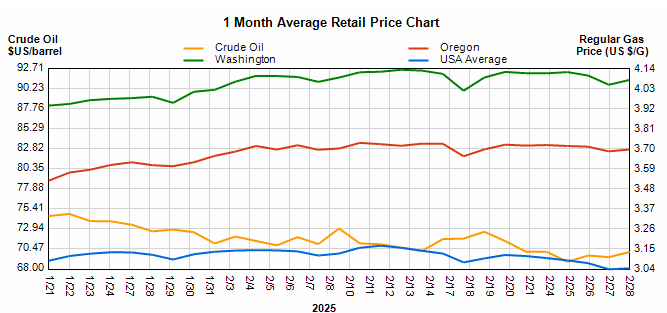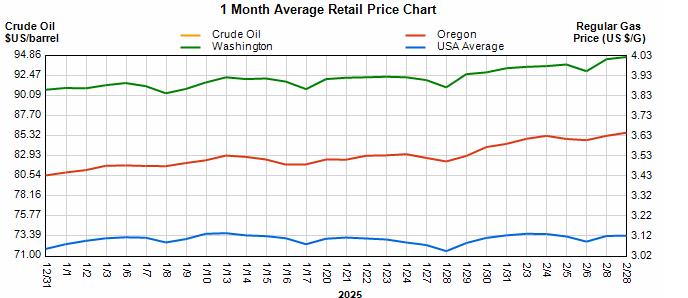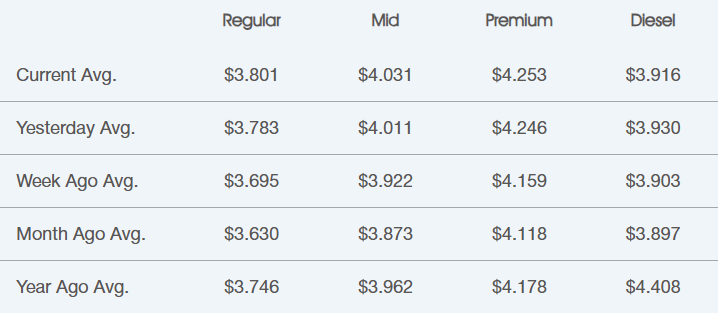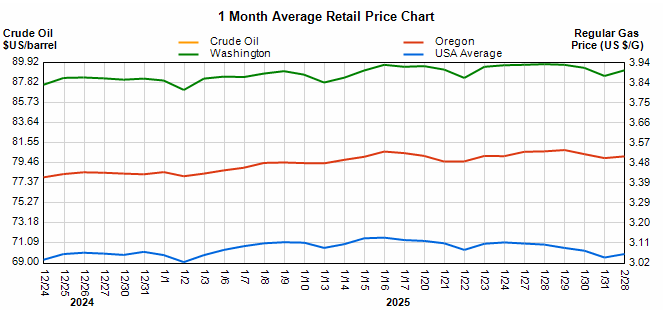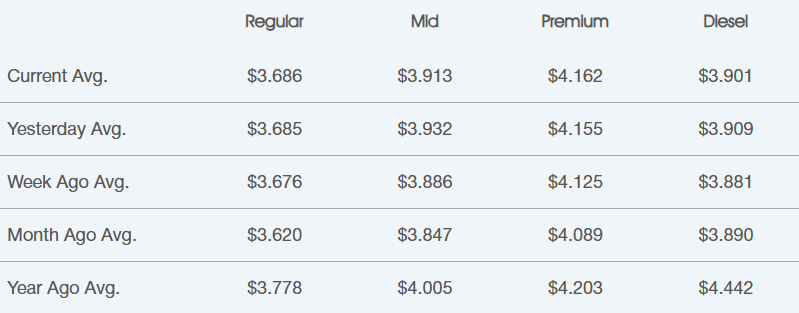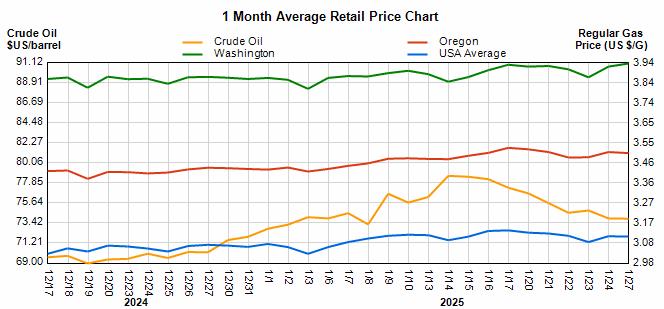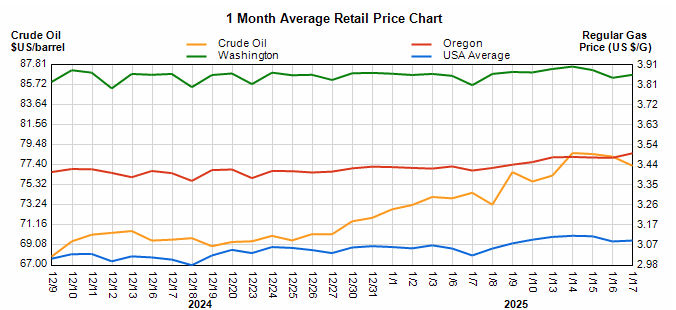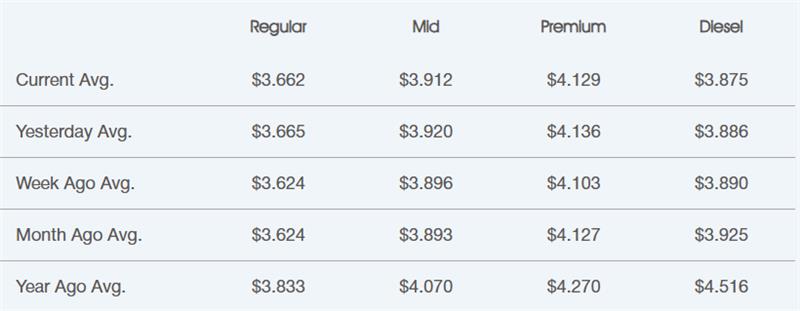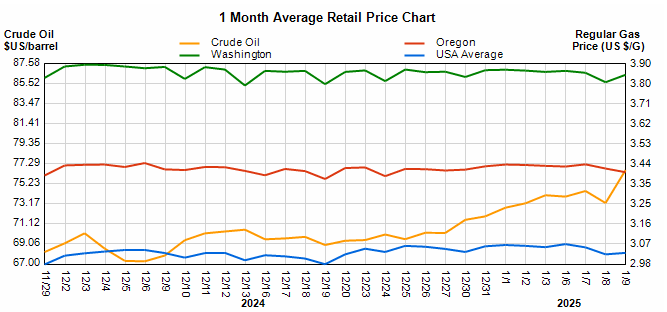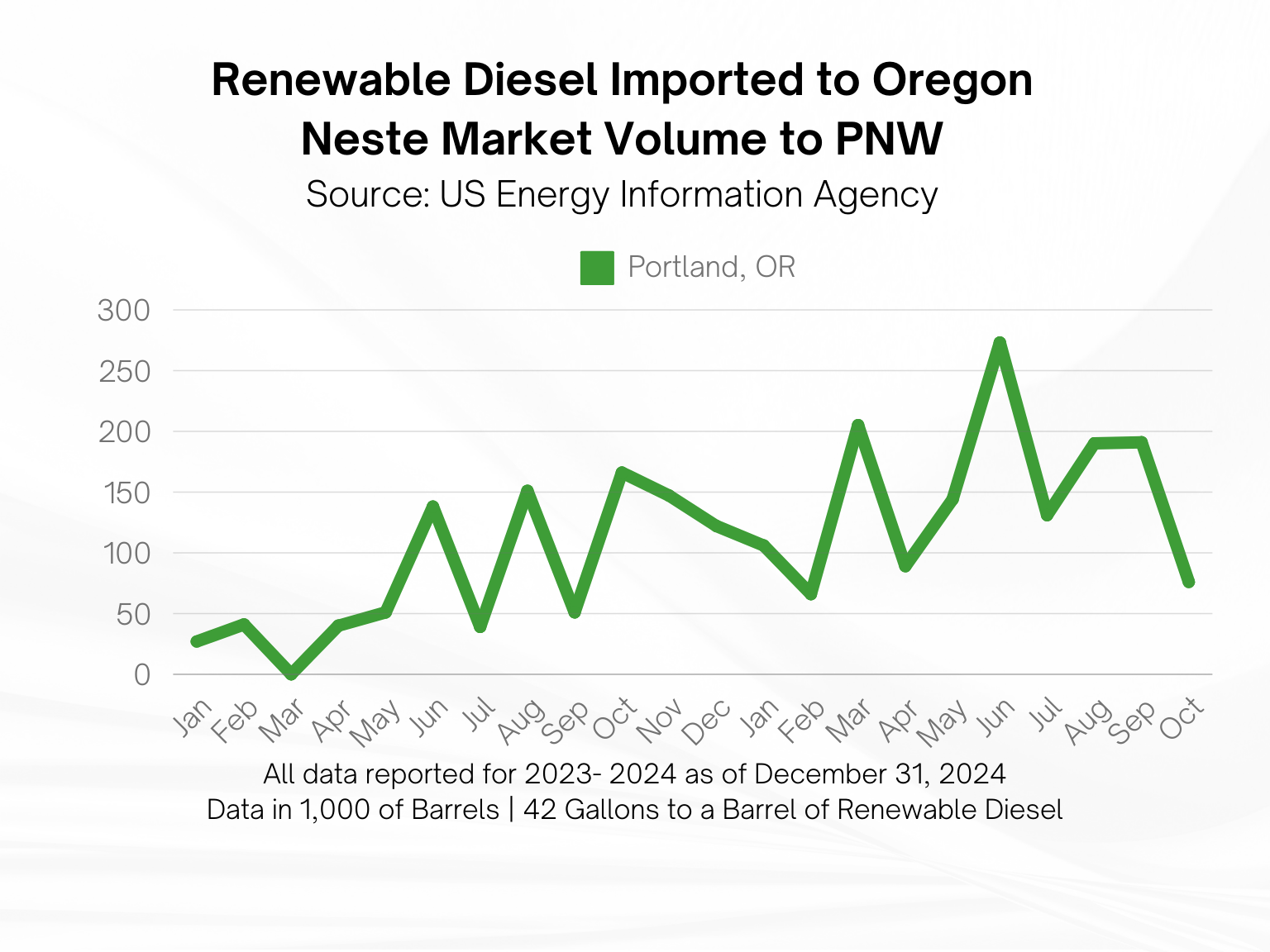Fuel Market Report: March 2nd – March 8th, 2025

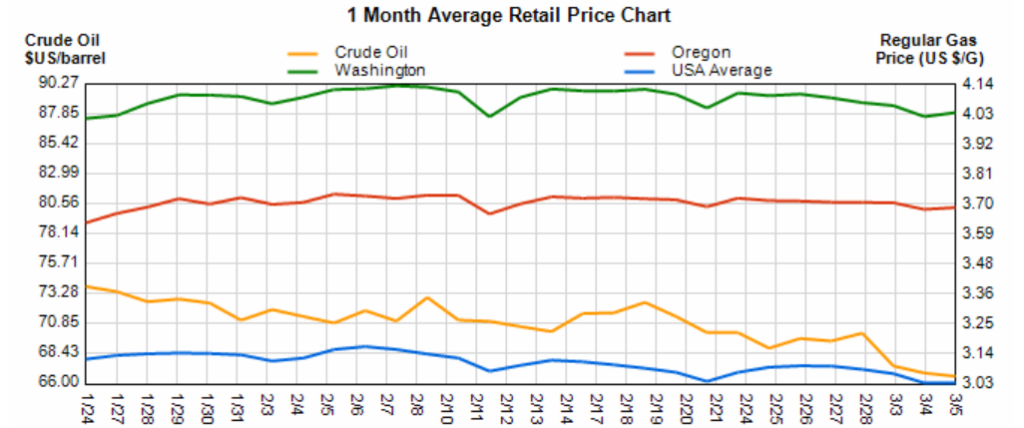
Wholesale Price Average 3/8/25
| Wholesale Low | Wholesale Avg | |
|---|---|---|
| E10 | $2.49 | $2.53 |
| B5 | $2.48 | $2.44 |
| B20 | $2.39 | $2.45 |
Average Retail Prices 3/8/25
| National | Oregon | Washington | |
|---|---|---|---|
| E10 | $3.09 | $3.73 | $4.10 |
| B5 | $3.63 | $3.86 | $4.38 |
Taxes
| Federal | State: OR | Local | State: WA | |
|---|---|---|---|---|
| Gas | $0.184 | $0.40 | $0-.13 | $0.494 |
| Diesel | $0.244 | $0.40 | $0-.13 | $0.494 |
Oregon Fuel Price Variance
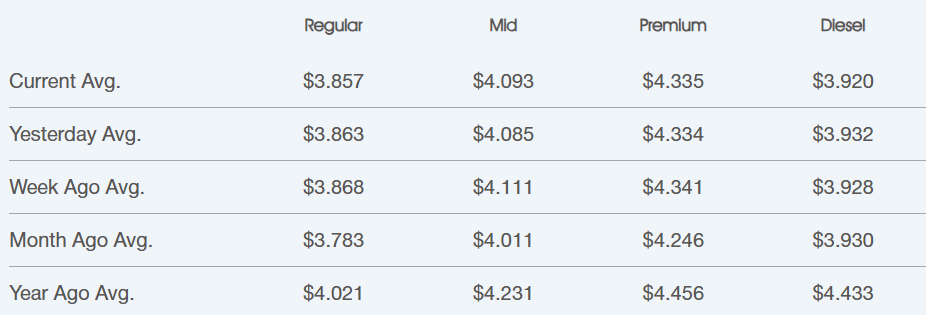
Fuel Market News
Fuel prices dropped across the board this past week with both gas and diesel down in price from the weeks previous. Portland rack averages dropped $0.06/gal for gas, $0.13/gal for B5 diesel and $0.04/gal for B20 diesel. Crude oil prices dropped below $67/barrel this week which contributed to the reduced fuel prices across the US. Although these price dips may not last long with President Trump’s 10% tariff on Canadian energy (not included in the USMCA) we will likely see higher energy cots in the Northeast states.
President Trump once again delayed his tariffs on Mexico and Canada creating further confusion within the market. This delay will last till April 2nd, Mexico & Canada will not receive tariffs on anything under the USMCA agreement. The constant back and forth over tariffs in the last 3 weeks has created a great deal of uncertainty in the US stock market with the Fear and Greed Index reaching far to the left of the scale with a score of 15 representing extreme fear within the market. Time will tell how the market responds over the next few weeks as more comes out of the Trump administration.
Oregonians may be in store for higher diesel prices this year with the end of Blenders Tax Credits, the introduction of the Producers Tax Credit & the Oregon Climate Protection Program going into 2025. For more on this report visit the link below.
2025 Fuel Market Outlook: Oregon
Winter season is upon us; although weather conditions have been moderate thus far, a storm can quickly change that. To avoid any power outages for your operations, be sure your backup generators are topped off and ready to trigger when needed.
Get your generators topped off

Important Note: Per the City Of Portland, “Distributors in the City of Portland are required to meet the minimum biofuel content requirements for all fuel they distribute beginning on May 15, 2024. All diesel fuel distributed to retail stations, non-retail dealers, or wholesale purchaser-consumers must include a minimum of 15% biofuel content, from either renewable diesel or biodiesel. This requirement increases to 50% on May 15, 2026, and 99% on May 15, 2030”.
Crude oil traded below $70 this past week, at a current price of $65.97/barrel. This is $2.25/lower than it was last week.
Crude oil is the main ingredient for gasoline and diesel. Per AAA, on average about 50% of what you pay at the pump is the price of crude oil, breaking down as 25% refining, 11% distribution & marketing, and 14% taxes—a helpful breakdown for consumers wondering why they are paying the prices that they pay. Crude Oil is currently trading at $65.97/barrel compared to $68.22/barrel., last week and $77 a year ago.
Fuel prices result from a complex interplay of the factors mentioned above and other factors regionally. Additionally, prices may vary by specific regions within Oregon and Washington. For the most precise and up-to-date information on fuel prices and the causes for these price changes within your area, use the links below for AAA & GasBuddy.
If you have any questions, feel free to contact Star Oilco and speak to one of our fuel market advisors to discuss how the market can impact your business.



